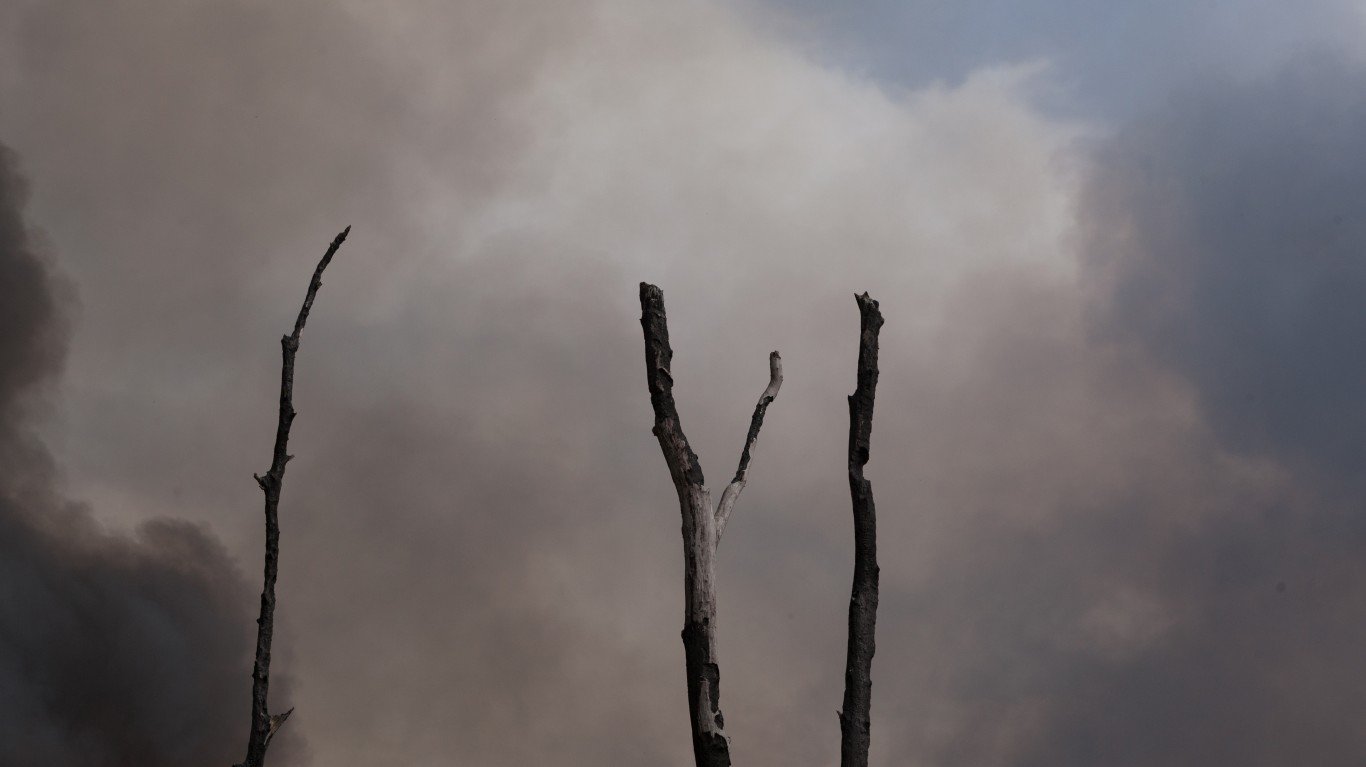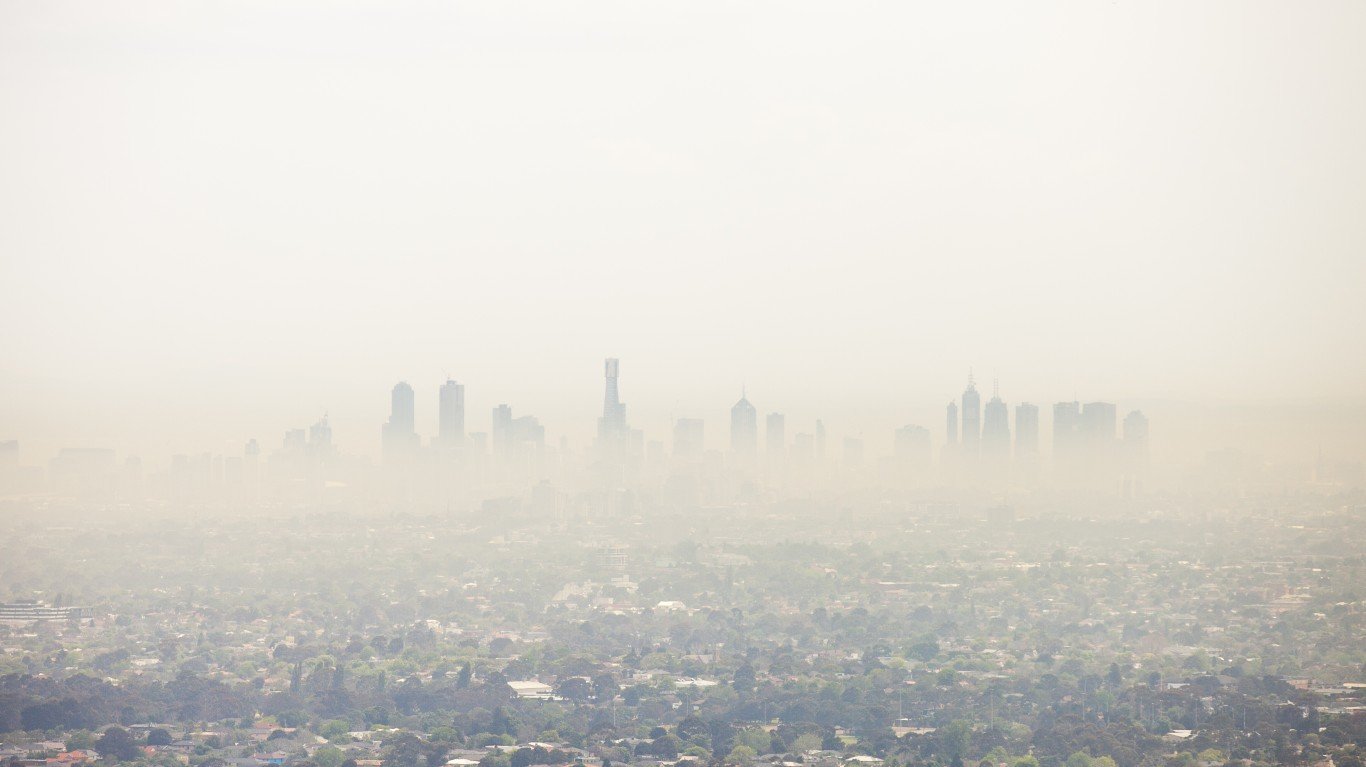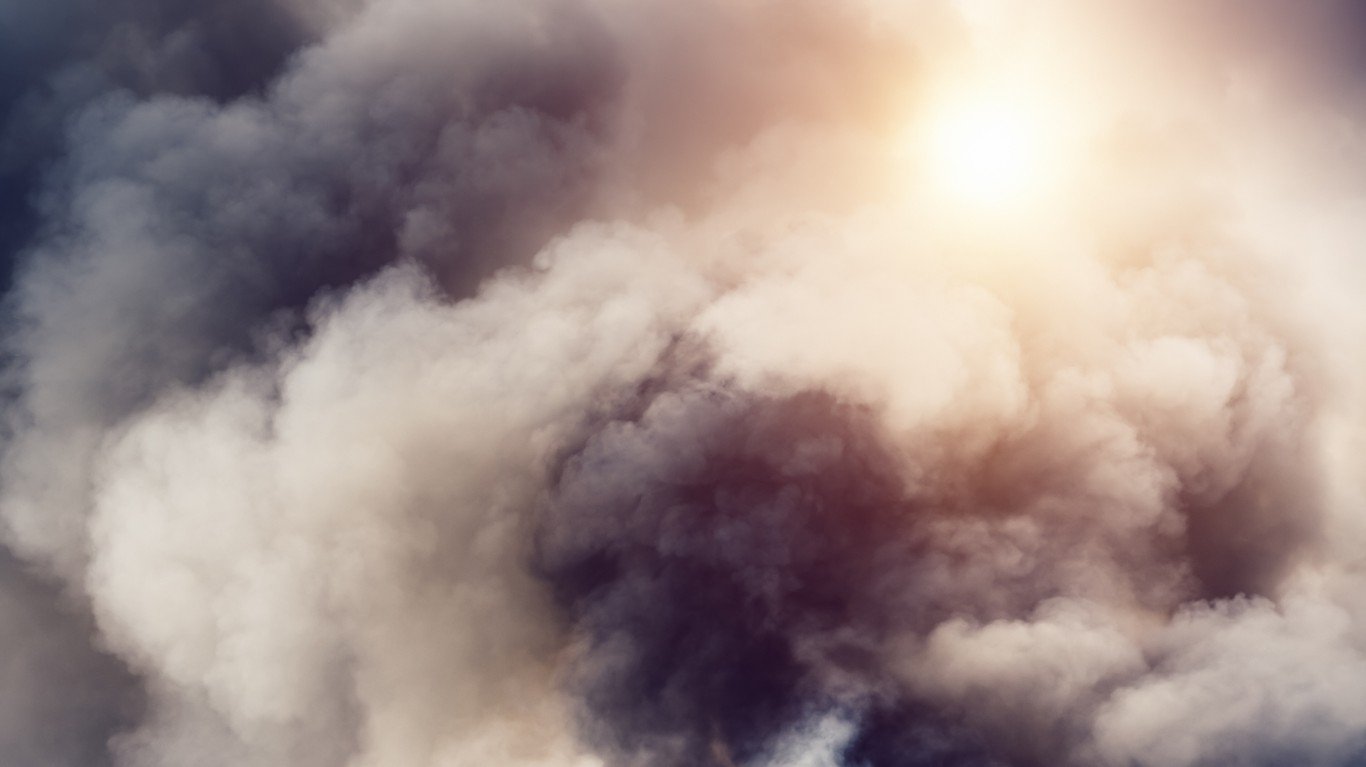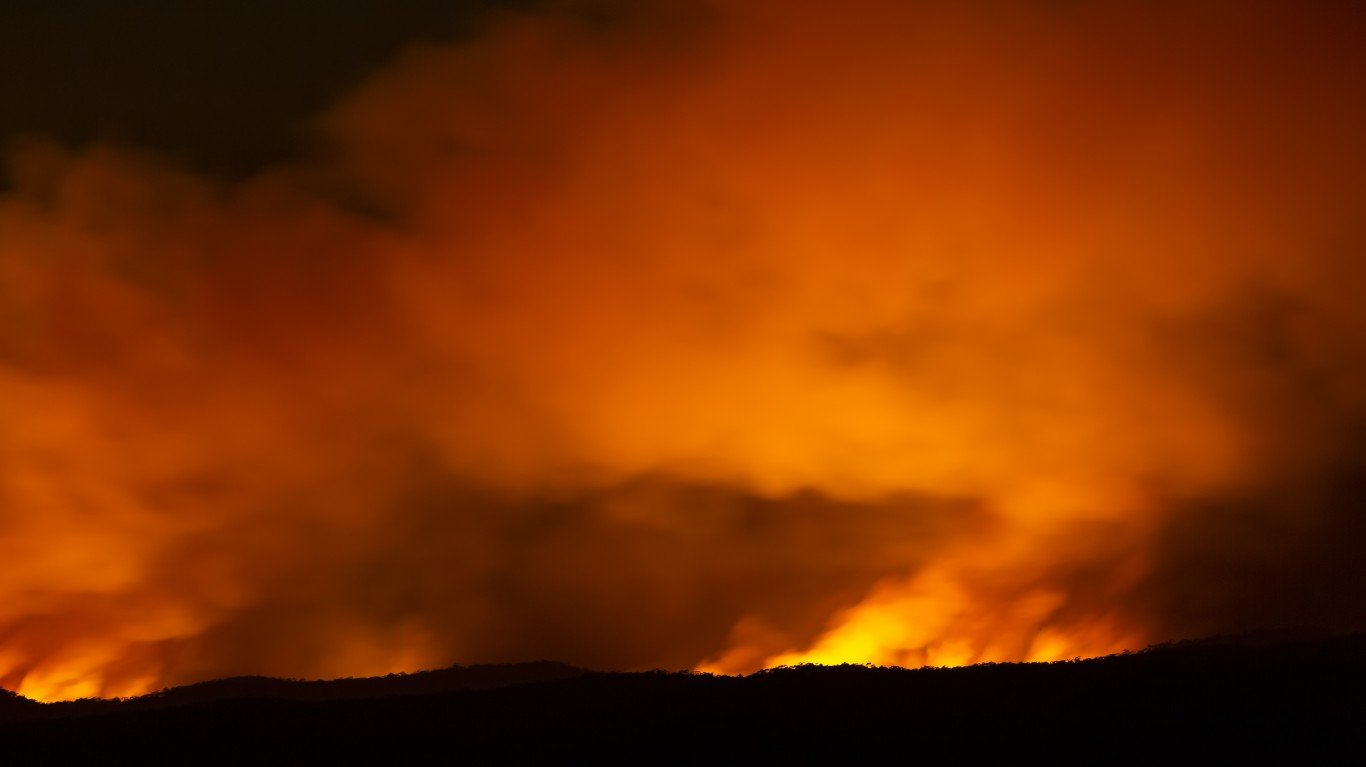
23. Urban fires
Urban fires from the first nuclear strike would cause sooty smoke, or black carbon, arising from a city’s ruins. Though smaller in magnitude, when black carbon was injected into the atmosphere 66 million years ago – when an asteroid impact caused much of the Earth’s surface to burn – it resulted in a mass extinction event.

22. Forest wildfires
Wildfires ignited from a firestorm after a nuclear weapons exchange would contribute to a nuclear winter.

21. Smoke from fallout
Smoke from fallout would block out sunlight for years, causing below-freezing temperatures.

20. Soot in stratosphere
Black carbon would absorb radiation and heat up from sunlight. As a result, the surrounding air would become buoyant, lifting soot into the stratosphere.

19. Winds carry soot
The buoyant aerosols would reach the higher levels of the stratosphere, encountering winds that would distribute the smoke over the Earth.






